This fresh and tasty classic Pico de Gallo (also known as salsa fresca –fresh sauce or salsa cruda–raw sauce) combines diced tomatoes, onions, and peppers with cilantro, lime juice, and salt.
What Is Pico de Gallo?
The literal translation of Pico de Gallo is “rooster’s beak” — which leaves many people questioning where the name comes from! Some believe it was originally eaten by pinching between the thumb and finger which makes the shape of a rooster’s beak. Others think it’s a reference to the spicy ‘bite’ of the peppers, onions and tomatoes.
That said, this salsa has nothing to do with beaks or birds! It’s a fresh salsa used commonly in Mexican cuisine. Pretty much anywhere you want to add a scoop of salsa, you can replace that with a scoop of pico!
QUICK TIP
Here’s how to pronounce Pico de Gallo: PEE-koh theh GAH-yoh
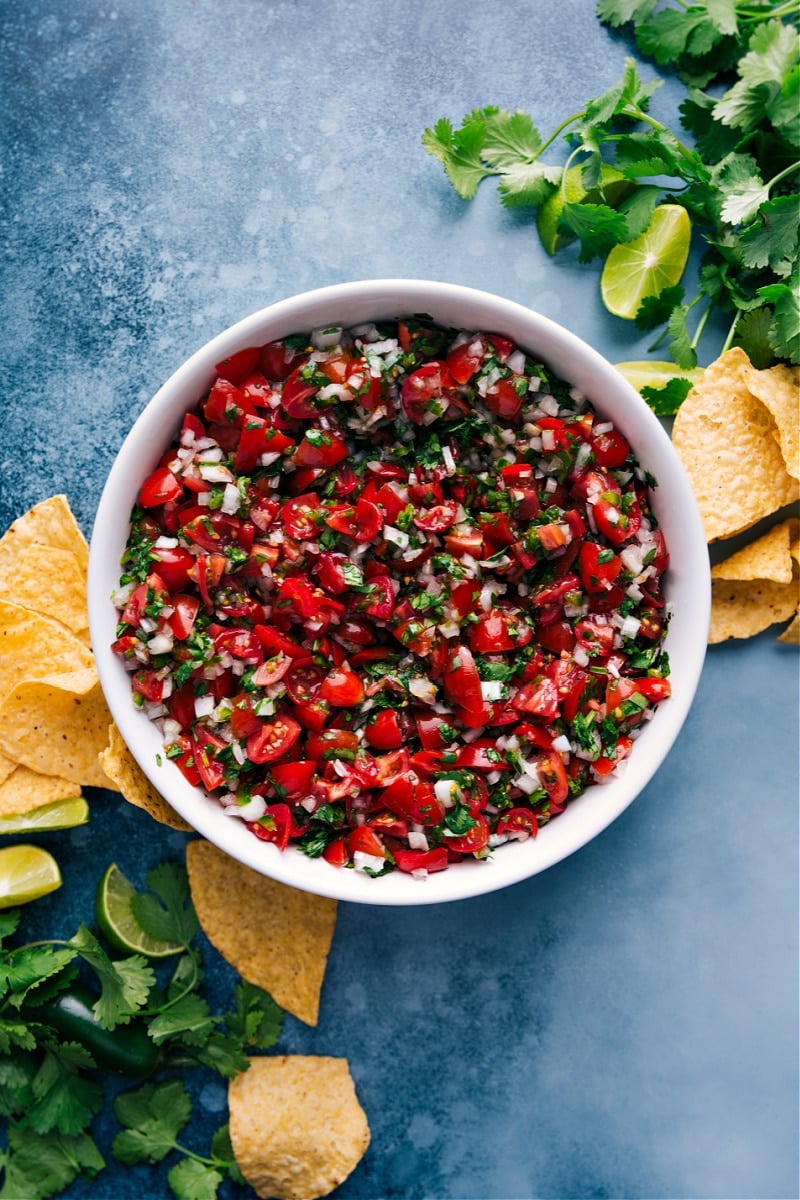
What Is Pico De Gallo Vs. Salsa?
While this pico recipe shares a lot of the same basic ingredients as our favorite salsa recipe, the preparation method is different.
- Pico uses raw, diced ingredients and is intended to add more of a chunky, substantial texture to your favorite Mexican meals.
- Salsa more commonly calls for roasted or stewed tomatoes and is less chunky (more of a puree consistency reached by blending or smashing instead of chopping).
So, Is Pico De Gallo Just Salsa?
It is a type of salsa. It’s a fresh, uncooked mixture of veggies and herbs that is unbelievably tasty and the perfect accompaniment to your favorite Mexican meals.
QUICK TIP
Salsa is more like a relish–chunky and fresh, whereas salsa is a cooked sauce.
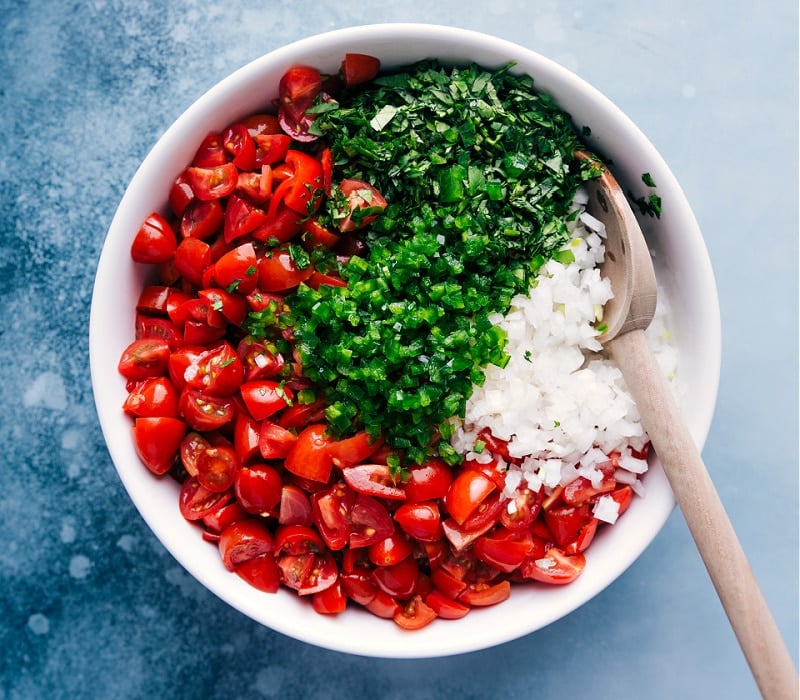
How To Make Pico De Gallo
This recipe requires some time to chop everything, but overall it’s very simple to make!
Here are our top tips:
- Aim to cut the ingredients into similar sizes for uniformity and the best texture.
- What size? The finer the chop, the better — more flavor in every bite!
- Use ripe tomatoes. The key to the best pico de gallo is ripe, flavorful tomatoes. Avoid unripe or pink tomatoes– you won’t get the same robust flavor. Look for the ripest, reddest tomatoes, and in the winter, use cherry tomatoes (which have the most consistent good flavor year-round).
- Let the pico rest. Allow time for the flavors to meld together and marinate — you’ll be rewarded with more flavor.
- Prepare jalapeños with caution. Use plastic gloves (or even a plastic bag) to protect your hands from the oils that can burn your fingers/under fingernails. (Or read up on how to help ease the pain from jalapeño burns).
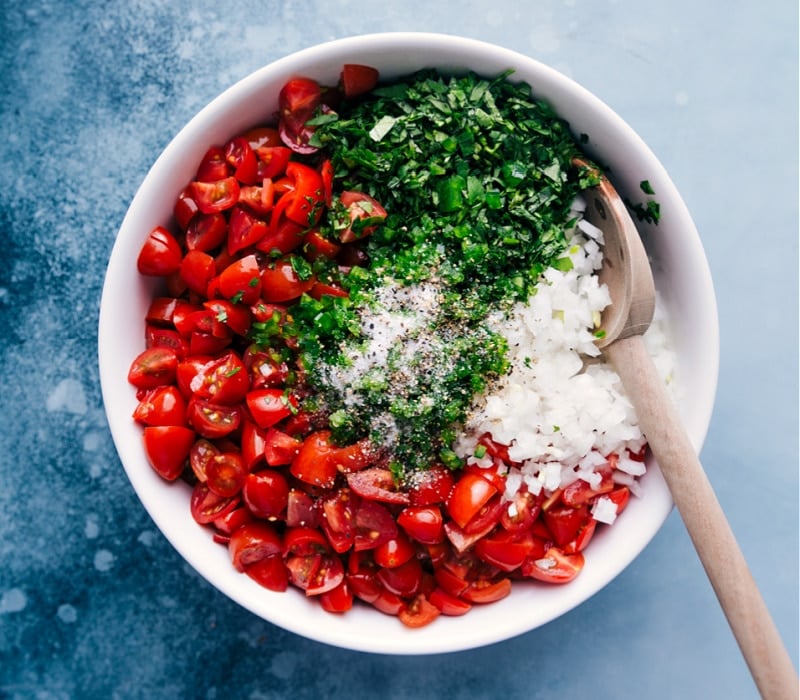
How To Serve Pico De Gallo
This salsa is delicious served with your favorite Mexican dishes. Or it’s great as is — with a bag of chips!
Here are some of our favorite recipes enjoy a scoop of pico:
QUICK TIP
However you serve it, make sure to serve the bowl of a pico with a slotted spoon. Tomatoes release a lot of liquid (especially when salted) so those juices will pool at the bottom. When you get a scoop, the slotted spoon will grab all the good stuff leaving that moisture behind.
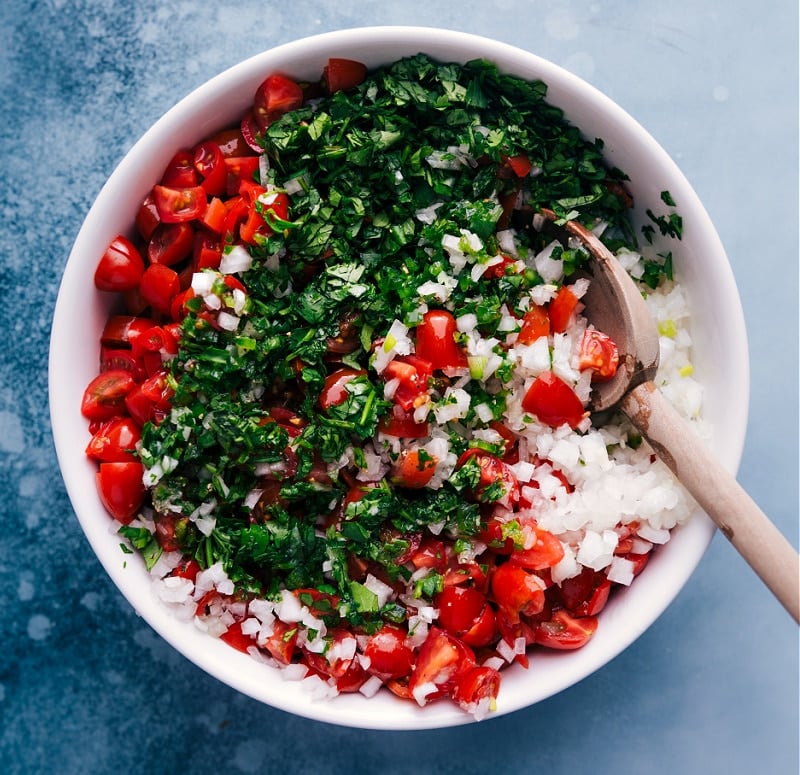
VARIATIONS
Fun Variation Ideas
- Want to make Pico de Gallo with avocado? Add in 1 large, ripe avocado. Dice it to the same size as the tomatoes for perfect consistency. (Keep in mind, this salsa won’t last as long with the avocado in it.)
- Pico de Gallo without lime? You could replace the lime with lemon or a touch of red wine vinegar for a similar touch of acidity.
- Also, tomatoes are a fruit, so keeping quantities the same, you can replace the tomatoes with a different fruit — think pineapple, mango, peaches, etc.
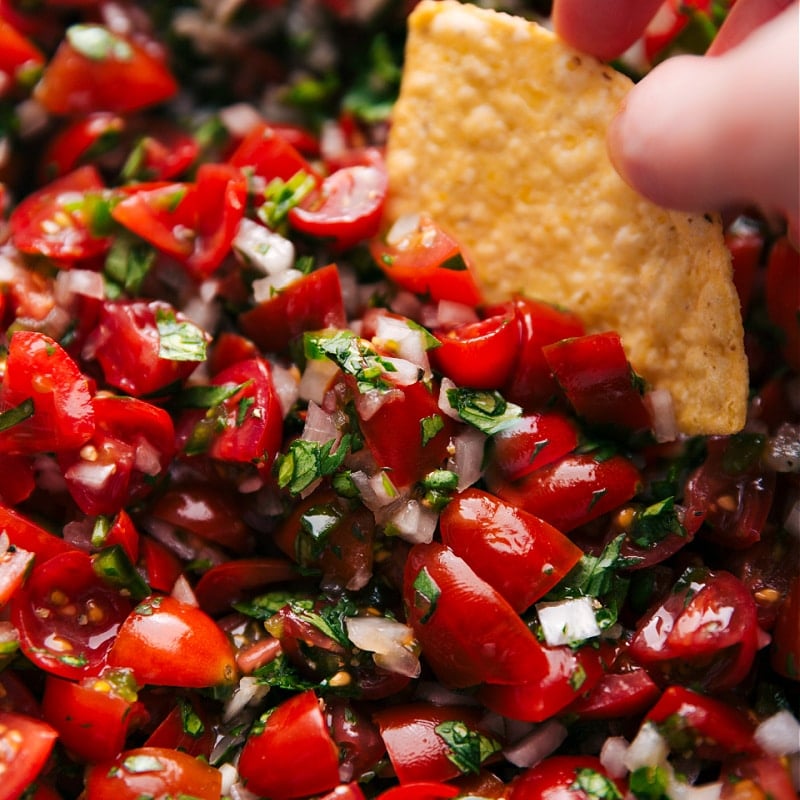
STORAGE
Pico De Gallo Storage
To make ahead: Leave out the lime juice, olive oil, and salt (otherwise the tomato juices leach out excessively). Cover in an airtight container in the fridge. When ready to serve, drain off excess liquid, and add lime juice, olive oil, and salt right before serving.
Leftovers can be stored in an airtight container in the fridge for up to 3 days. Keep in mind that the longer it sits, the more the acidity will mellow, so you may want to add a fresh squeeze of lime juice and a touch more salt. It will also become more watery as it sits — drain off excess liquid.
More Fresh Salsa Recipes:
Pico De Gallo
This fresh and tasty classic Pico de Gallo (also known as Salsa Fresca–fresh sauce, or Salsa Cruda–raw sauce) is made by combining diced tomatoes, onions, and peppers, with cilantro, lime juice, and salt.
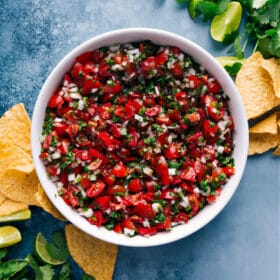
Pico De Gallo

This fresh and tasty classic Pico de Gallo (also known as Salsa Fresca–fresh sauce, or Salsa Cruda–raw sauce) is made by combining diced tomatoes, onions, and peppers, with cilantro, lime juice, and salt.
Instructions
-
PREP: If sensitive to onion, soak the diced onions in a bowl of cold water for 5 minutes. Drain well and add to a bowl. Read Note 1 for preparing the tomatoes and Note 2 for preparing the jalapeños. Aim to cut ingredients into similar sizes for uniformity and the best texture. What size? The finer the chop, the better — more flavor in every bite!
-
PREPARE: Add in the remaining ingredients, seasoning to taste with salt and pepper. (I add 3/4 tsp salt and 1/4 tsp pepper.) Toss gently and give it a taste test. Add any additional salt/pepper or lime juice to taste (flavors should sing!) then chill in the fridge for 10-15 minutes before serving. TIP: If enjoying with chips, we recommend testing the pico with the chips to determine if it needs more salt. Since chips are typically salted, the salsa may be best with less salt.
-
SERVE: Serve with a slotted spoon (it gets juicy), scooping onto any of your favorite Mexican dishes or enjoy with chips!
-
MAKE AHEAD: Leave out the lime juice, olive oil, and salt (otherwise the tomato juices leach out excessively). Cover in an airtight container in the fridge. When ready to serve, drain off excess liquid, add lime juice, olive oil, and salt right before serving.
-
STORAGE: Leftovers can be stored in an airtight container in the fridge for up to 3 days. Keep in mind that the longer it sits, the more the acidity will mellow, so you may want to add a fresh squeeze of lime juice and a touch more salt. It will also become more watery as it sits — drain off excess liquid.
Recipe Notes
Note 2: Jalapeños: When preparing the jalapeño, you may want to do this with gloves on (or a plastic bag over your fingers) as it can burn your fingers/under fingernails. Wash your hands immediately after preparing/touching. Cut jalapeño in half and remove seeds. Coarsely chop to measure. Add more of the jalapeño for a spicier salsa, or add slowly if you prefer less heat. Wrinkly jalapeños are going to be spicier than smooth jalapeños.
Nutrition Facts
Serving: 1serving | Calories: 38kcal | Carbohydrates: 5.3g | Protein: 1g | Fat: 1.9g | Sodium: 296.1mg | Fiber: 1.4g | Sugar: 3g
We do our best to provide accurate nutritional analysis for our recipes. Our nutritional data is calculated using a third-party algorithm and may vary, based on individual cooking styles, measurements, and ingredient sizes. Please use this information for comparison purposes and consult a health professional for nutrition guidance as needed.







More Stories
Popular Dessert Courses in Indian Catering
Ragi or Finger Millet – Its Health Benefits and a Quick Dessert
Create the Best Bread Pudding Recipe – New Orleans Style!